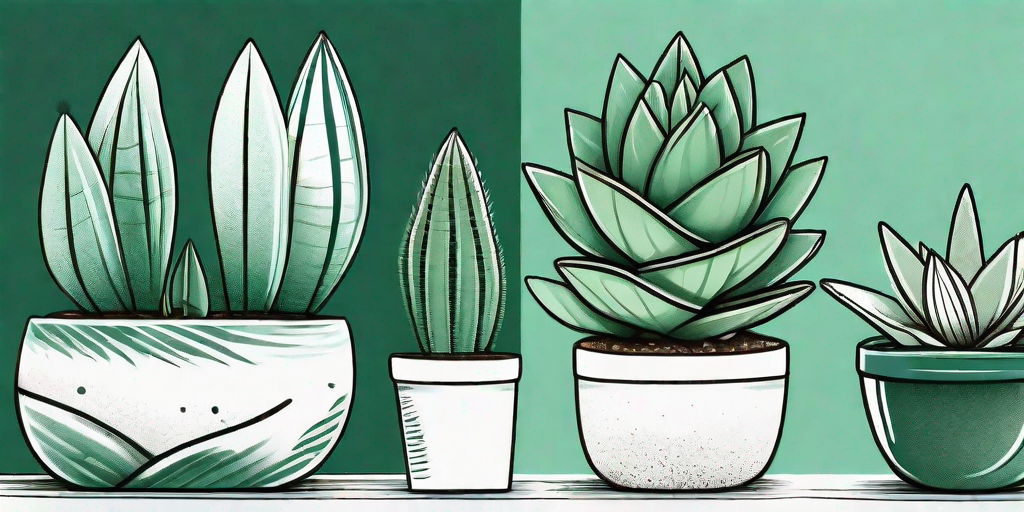
If you're a fan of succulents, you're probably familiar with the Haworthia family. These little beauties are the divas of the succulent world, with their striking appearance and slightly finicky nature. But don't let that intimidate you! With the right knowledge and a little bit of cheek, you can propagate your own Haworthia family and become the envy of all your plant-loving friends. So, buckle up, green thumbs, because we're about to dive into the world of Haworthia propagation.
Understanding Haworthia
Before we get our hands dirty, let's take a moment to appreciate the star of our show. Haworthia is a genus of small succulent plants native to Southern Africa. They are characterized by their rosette-like growth pattern and their thick, fleshy leaves that often bear striking patterns. They're like the zebra of the plant world, if zebras were small, green, and lived in pots on your windowsill.
There are many species of Haworthia, each with its own unique appearance and care requirements. Some are as smooth as a baby's bottom, while others have leaves that are so bumpy, they could give a toad a run for its money. But regardless of their outward appearance, all Haworthia share a common trait: they love to be propagated. And who are we to deny them that pleasure?
Propagation Methods
There are several ways to propagate Haworthia, each with its own set of pros and cons. The method you choose will depend on your personal preference, the type of Haworthia you have, and how much time you're willing to spend talking to your plants (don't judge, it helps).
Leaf Propagation
Leaf propagation is the easiest and most common method of Haworthia propagation. It involves removing a leaf from the mother plant, letting it dry for a few days, and then placing it on top of a pot of soil. With a little bit of patience and a lot of crossed fingers, the leaf will eventually sprout roots and a new baby Haworthia will be born. It's like magic, but without the fancy wand and the sparkly robe.
However, not all Haworthia species can be propagated by leaf. Some, like the Haworthia cooperi, are a bit more stubborn and require a different approach. But don't worry, we've got you covered.
Offset Propagation
Offset propagation involves removing a small offset, or "pup", from the mother plant and planting it in its own pot. This method is a bit more involved than leaf propagation, but it's also more reliable and can result in a larger plant in a shorter amount of time. Plus, it gives you an excuse to use the word "pup" in a sentence, which is always a win in our book.
To propagate a Haworthia by offset, you'll need a sharp, clean knife and a steady hand. And maybe a glass of wine to steady your nerves. Just remember, the goal is to separate the pup from the mother, not to perform open-heart surgery. So take a deep breath, make a clean cut, and then celebrate your success with a victory dance (optional but highly recommended).
Aftercare
Once you've successfully propagated your Haworthia, it's time to move on to the aftercare. This is where things can get a bit tricky, as Haworthia are known for their diva-like tendencies. But with a little bit of love and a lot of patience, your new plants will thrive.
First, it's important to let your new plants rest for a few days before watering them. This allows the cut ends to callous over, reducing the risk of rot. After that, you can water them lightly, making sure not to overwater. Remember, Haworthia are succulents, not fish. They prefer their soil on the dry side.
As for light, Haworthia prefer bright, indirect light. So unless you're trying to recreate the surface of the sun in your living room, keep them away from direct sunlight. A windowsill with filtered light is perfect.
FAQs
Why is my Haworthia not propagating?
Patience, grasshopper. Propagation can take time, especially with Haworthia. If it's been a few weeks and you still don't see any roots, try moving your plant to a warmer location or increasing the humidity. And remember, talking to your plants can't hurt.
Can I propagate Haworthia in water?
While some succulents can be propagated in water, Haworthia generally prefer soil. But hey, if you're feeling adventurous, give it a try! Just remember to change the water regularly to prevent rot.
Why are the leaves on my Haworthia turning yellow?
Yellow leaves can be a sign of overwatering. Try reducing the amount of water you give your plant and make sure it's in a well-draining pot. If the problem persists, consider repotting your plant in fresh soil.
Conclusion
And there you have it, folks! Everything you need to know to propagate your own Haworthia family. So what are you waiting for? Grab your gardening gloves, put on your favorite plant-themed playlist, and get propagating! And remember, in the world of Haworthia propagation, patience is key. But the reward of seeing your new baby plants grow is well worth the wait.
Happy propagating!















